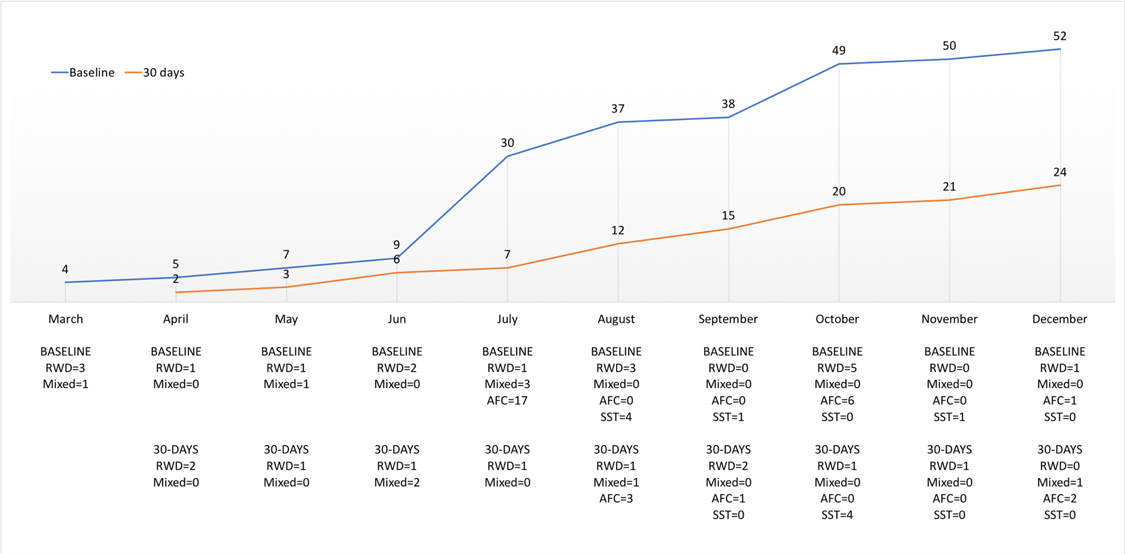Category: Rating Scales
Objective: Describe multiple methods used to recruit, enroll and retain participants to validate the FXTAS-RS.
Background: A clinical outcome assessment (COA) must be developed to measure the clinical benefit of FXTAS treatment, challenging scientists to recruit, enroll and retain participants of this rare disease.
Method: From March to December 2022, 70 premutation carriers (PMC) with and without FXTAS were expected to complete baseline and 12 months visits, and 40 to complete a visit within a month of the baseline through the following recruitment methods: 1. Real-World Data (RWD): We screened potential participants from electronic health records using automated queries with subsequent manual checks of the eligibility criteria. 2. Academic and Foundations-Led Collaboration (AFC): We established AFC with a lead investigator of another FXTAS study at Rush University to match the dates of visits for patients enrolled in both studies, and with The National Fragile X Foundation (NFXF). The NFXF provided space for our team to recruit and collect data during the national conference and advertised our study in the International Fragile X Premutation Registry (IFXPR) patient newsletter. 3. Snowball Sampling Technique (SST): Research participants assisted in identifying other potential subjects from their family or community network.
The enrollment and retention methods were site-less-based and patient-centric approaches. We evaluated them according to feasibility (practicality) and effectiveness (whether the method produced the expected result under ideal circumstances).
Results: We screened 123 potential participants, most being through RWD (48.8%), the first and most practical method to be implemented (Table 1, Figure 1). Of the total screened, 42.3% were enrolled, and the majority (46.2%) were through the AFC. Of the enrolled participants, 46.2% had the 30-day visit completed. Although the SST and Mixed methods were the least used for screening, they demonstrate that, over time, they were the ones that most enrolled (66.7 and 100%, respectively) and retained (66.7 and 80%, respectively) participants.
Conclusion: Implementing multiple methods to screen, enroll, and retain participants in a study aimed at validating a COA to assess FXTAS motor signs is feasible. They are also crucial for the effective recruitment and retention of participants.
To cite this abstract in AMA style:
M. Tosin, D. Hessl, J. O'Keefe, D. Hall. Multiple methods to improve recruitment, enrollment, and retention of study participants for validation of the Fragile X-Associated Tremor Ataxia Syndrome Rating Scale (FXTAS-RS) [abstract]. Mov Disord. 2023; 38 (suppl 1). https://www.mdsabstracts.org/abstract/multiple-methods-to-improve-recruitment-enrollment-and-retention-of-study-participants-for-validation-of-the-fragile-x-associated-tremor-ataxia-syndrome-rating-scale-fxtas-rs/. Accessed March 29, 2025.« Back to 2023 International Congress
MDS Abstracts - https://www.mdsabstracts.org/abstract/multiple-methods-to-improve-recruitment-enrollment-and-retention-of-study-participants-for-validation-of-the-fragile-x-associated-tremor-ataxia-syndrome-rating-scale-fxtas-rs/


